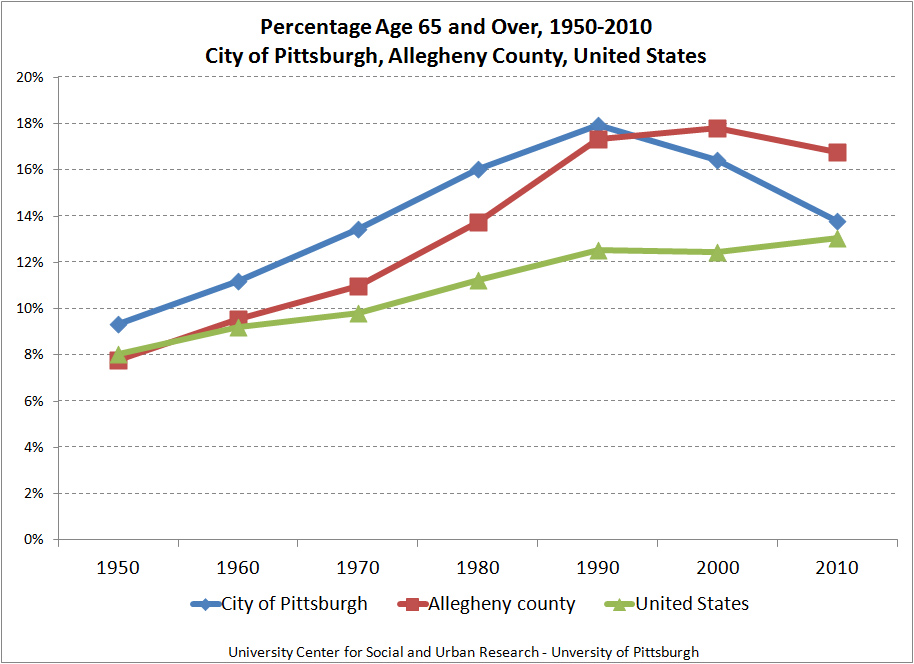For policy concerns such as brain drain, demographic facts take a backseat to mesofacts. What are mesofacts? Samuel Arbesman coined the term:
Mesofacts are the facts that change neither too quickly nor too slowly, that lie in this difficult-to-comprehend middle, or meso-, scale. Often, we learn these in school when young and hold onto them, even after they change. For example, if, as a baby boomer, you learned high school chemistry in 1970, and then, as we all are apt to do, did not take care to brush up on your chemistry periodically, you would not realize that there are 12 new elements in the Periodic Table. Over a tenth of the elements have been discovered since you graduated high school! While this might not affect your daily life, it is astonishing and a bit humbling.
To be less cynical about brain drain boondoggles, I blame mesofacts. During the 1980s, everyone was leaving Pittsburgh. The Steel City went bust. College graduates streamed to cool Austin. To this day, the mythology persists. Allegheny Conference Chief Executive Officer Dennis Yablonsky invoking the mesofact of Pittsburgh dying:
“We are the only region in the country that has more natural deaths than births, and that aging means that many ‘baby-boomers’ will be retiring in the next five to ten years, and will have to be replaced, not only in numbers, but in skills.”
Yablonsky’s narrative means Pittsburgh has jobs, but not enough talent to fill them. He is using mesofacts to pitch the region to prospective newcomers and repatriates. What Yablonsky doesn’t note, and he should know better, is Pittsburgh bucking the national trend. It’s getting younger and the number of residents aged 65 and over has been declining for two decades.

The talent shortage is really an anxiety about rising wages. Mesofacts make the demographic deception possible. Out of one side of Yablonsky’s mouth, Pittsburgh is thriving. Out of the other, Pittsburgh is dying.
The Rust Belt shale gas boom is another example of demographic deception. Drill baby, drill and manufacturing will come back along with the middle class. Companies stand to benefit from the energy bounty. Workers, not so much:
“The industries benefiting are more capital intensive than labor intensive,” said Tom Waltermire, the chief executive of Team NEO, the economic development agency for northeast Ohio.
“Even a manufacturing renaissance won’t require the same headcount per unit of output as we had 20 or 30 years ago. If it did require that, the renaissance would never happen.”
A bunch of employment went to China. NAFTA started that giant sucking sound out of Mexico. Right-to-work made Sun Belt states more attractive to factories and assembly lines. Those are the mesofacts. The demographic trends tell a different story. The United States needs less employees to produce more goods:
By 2006, the U.S. economy employed about as many workers in manufacturing as in 1950, just over 14 million. And so, looking at manufacturing employment alone leads one to believe that the sector is in decline or at best stagnant.
However, a very different conclusion emerges if you focus on the amount of goods being produced by the manufacturing sector. While employment has changed very little over the past 60 years, output in manufacturing has increased at an annual rate of 3.4%. Manufacturing output in 2007 (the recent peak in manufacturing output) was over 600% higher than in 1950.
Emphasis added. The same number of workers results in 600 percent more output. A manufacturing renaissance is not a job creation stimulus. It won’t reinvigorate the middle class. Ignore the clamor for fair trade. Industry is too damn efficient. But what people believe is more important and powerful than data-driven analysis.





